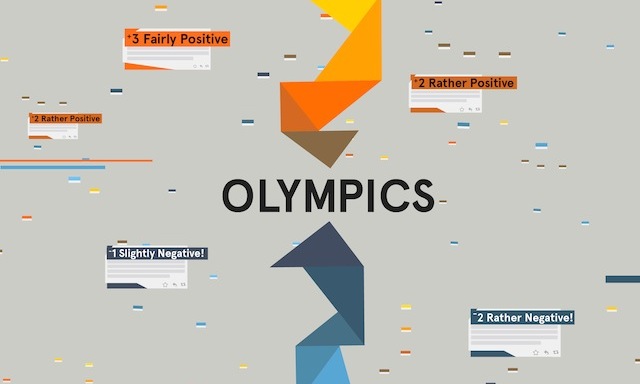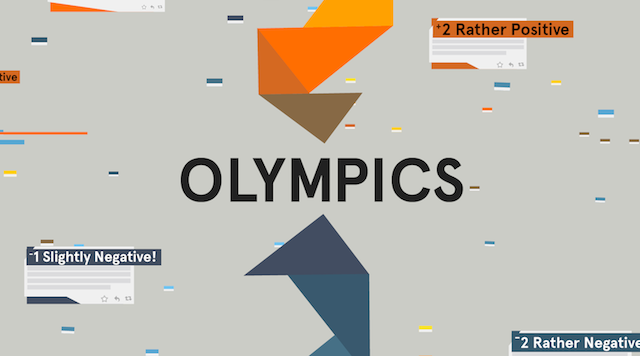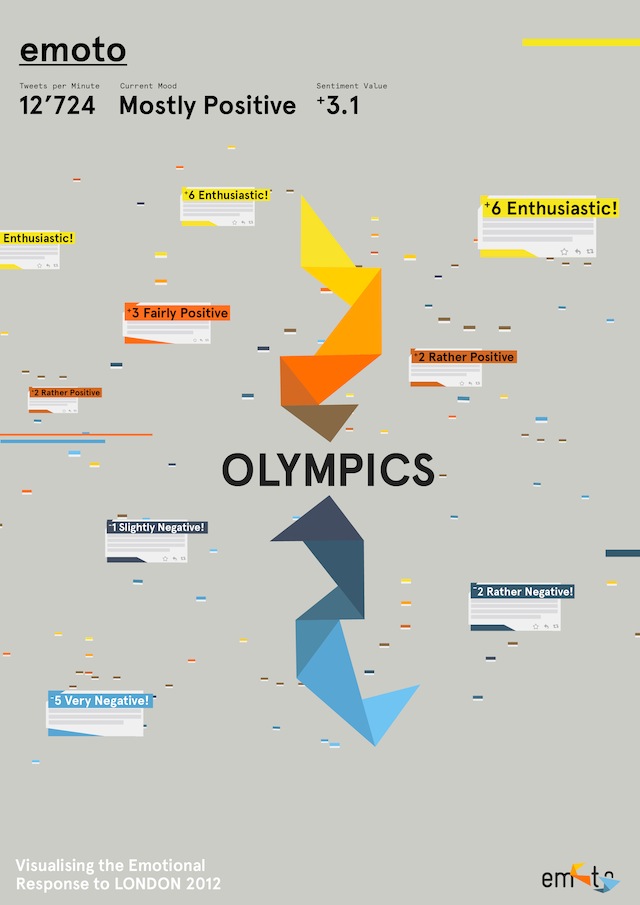The London 2012 Olympic Games is nearly upon us and, naturally, in the lead up to such a major sporting event that will generate incredible quantities of data and create fantastic opportunities for analysis, there are a number of interesting visualisation and infographic developments making their way around the field. One of the most ambitious, unique, multi-faceted and fundamentally exciting projects will be launched next week, it is called ‘emoto‘ and is something you will be hearing a great deal about.
Emoto is a new artistic data visualisation project created by Drew Hemment (artist, curator and director of the FutureEverything festival), Moritz Stefaner and Studio NAND. In this age of social media and real-time availability of public perception, this project will be the first to capture, measure and artistically portray the ongoing online response and ’emotional tone’ surrounding the London 2012 Olympic and Paralympic Games. This real-time monitoring will allow anyone to see what events, athletes or particular stories are resulting in the most online chatter.
“This project… will bring to life the most compelling aspect of any Games, the emotional intensity of the audience response, the hot topics raised, the essence and the pulse of London2012. This is not a scientific representation but an artistic representation and it will be a unique contribution to the London 2012 Festival experience creating a shared experience for across the globe. This will change the way people consume major sporting and cultural events because for the first time you receive instant feedback from other people around the world who are sharing that experience.”
The discovered sentiments will be displayed in a series of infographics (sample below) which show whether the reactions are positive (orange) or negative (blue). This sentiment information is visualised in three ways:
- A ‘swarm’ in which animated geometric objects represent levels of interest around certain topics, such as the names of an athlete or event, which are frequently being mentioned online and whether the ‘chatter’ around these are positive (orange) or negative (blue)
- Sentigraphs, a form of scatterplot, will display the general mood over time based on the sentiment scores for social media messages – once again assigning them as positive (orange) or negative (blue)
- A ‘stream’ will display the actual content of the tweets and social media messages related to the games. Viewers/journalists will be able to ‘grab’ these comments to gauge the reaction to a particular event or news story that has got people talking online.
These infographics will capture the change in moods in real-time as the events unfold and as the key insights emerge, the team will be blogging about the most interesting findings and patterns emerging from the the digital visualisations.
Throughout the Games, residents and visitors to London will also be able to download the ‘emoto in London’ app for android; a mobile app, created by researchers at the SENSEable City Lab, which uses live twitter information to create a real-time augmented reality visualization of the online response to the Games on the handheld device.
Once the games have completed, the project will continue to evolve in a fascinating way. The raw material of the millions of online interactions will be transformed into a 3D artwork to create a landscape of the collected sentiment data. It will be milled onto 19 plates, each of which represents a record of the emotional response over one day of the event. The artwork will go on show at WE PLAY Expo from 7 – 9 September 2012 in Preston.
And that’s not all! The project will also culminate in ‘emoto in London’; a large scale public sound installation which translates the sentiment-analyzed Twitter data into a 48-channel harmonic experience, which will be on show in Trafalgar Square from August 29 – September 9.
All in all this is an amazing sounding project, one of the most creative and ambitious visualisation developments I can recall. You can read more about ‘emoto‘ once it is live on the dedicated site and follow developments on the newly set-up Twitter feed.




